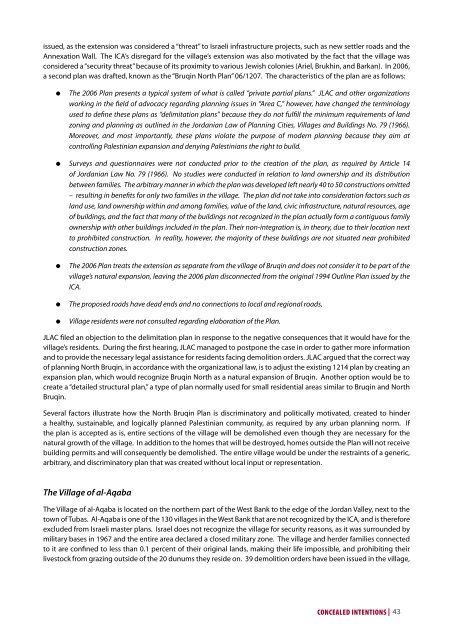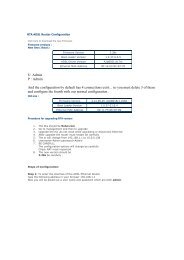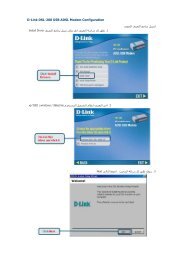Concealed Intentions- JLAC-.pdf
Concealed Intentions- JLAC-.pdf
Concealed Intentions- JLAC-.pdf
You also want an ePaper? Increase the reach of your titles
YUMPU automatically turns print PDFs into web optimized ePapers that Google loves.
issued, as the extension was considered a “threat” to Israeli infrastructure projects, such as new settler roads and the<br />
Annexation Wall. The ICA’s disregard for the village’s extension was also motivated by the fact that the village was<br />
considered a “security threat” because of its proximity to various Jewish colonies (Ariel, Brukhin, and Barkan). In 2006,<br />
a second plan was drafted, known as the “Bruqin North Plan” 06/1207. The characteristics of the plan are as follows:<br />
The 2006 Plan presents a typical system of what is called “private partial plans.” <strong>JLAC</strong> and other organizations<br />
working in the field of advocacy regarding planning issues in “Area C,” however, have changed the terminology<br />
used to define these plans as “delimitation plans” because they do not fulfill the minimum requirements of land<br />
zoning and planning as outlined in the Jordanian Law of Planning Cities, Villages and Buildings No. 79 (1966).<br />
Moreover, and most importantly, these plans violate the purpose of modern planning because they aim at<br />
controlling Palestinian expansion and denying Palestinians the right to build.<br />
Surveys and questionnaires were not conducted prior to the creation of the plan, as required by Article 14<br />
of Jordanian Law No. 79 (1966). No studies were conducted in relation to land ownership and its distribution<br />
between families. The arbitrary manner in which the plan was developed left nearly 40 to 50 constructions omitted<br />
– resulting in benefits for only two families in the village. The plan did not take into consideration factors such as<br />
land use, land ownership within and among families, value of the land, civic infrastructure, natural resources, age<br />
of buildings, and the fact that many of the buildings not recognized in the plan actually form a contiguous family<br />
ownership with other buildings included in the plan. Their non-integration is, in theory, due to their location next<br />
to prohibited construction. In reality, however, the majority of these buildings are not situated near prohibited<br />
construction zones.<br />
The 2006 Plan treats the extension as separate from the village of Bruqin and does not consider it to be part of the<br />
village’s natural expansion, leaving the 2006 plan disconnected from the original 1994 Outline Plan issued by the<br />
ICA.<br />
The proposed roads have dead ends and no connections to local and regional roads.<br />
Village residents were not consulted regarding elaboration of the Plan.<br />
<strong>JLAC</strong> filed an objection to the delimitation plan in response to the negative consequences that it would have for the<br />
village’s residents. During the first hearing, <strong>JLAC</strong> managed to postpone the case in order to gather more information<br />
and to provide the necessary legal assistance for residents facing demolition orders. <strong>JLAC</strong> argued that the correct way<br />
of planning North Bruqin, in accordance with the organizational law, is to adjust the existing 1214 plan by creating an<br />
expansion plan, which would recognize Bruqin North as a natural expansion of Bruqin. Another option would be to<br />
create a “detailed structural plan,” a type of plan normally used for small residential areas similar to Bruqin and North<br />
Bruqin.<br />
Several factors illustrate how the North Bruqin Plan is discriminatory and politically motivated, created to hinder<br />
a healthy, sustainable, and logically planned Palestinian community, as required by any urban planning norm. If<br />
the plan is accepted as is, entire sections of the village will be demolished even though they are necessary for the<br />
natural growth of the village. In addition to the homes that will be destroyed, homes outside the Plan will not receive<br />
building permits and will consequently be demolished. The entire village would be under the restraints of a generic,<br />
arbitrary, and discriminatory plan that was created without local input or representation.<br />
The Village of al-Aqaba<br />
The Village of al-Aqaba is located on the northern part of the West Bank to the edge of the Jordan Valley, next to the<br />
town of Tubas. Al-Aqaba is one of the 130 villages in the West Bank that are not recognized by the ICA, and is therefore<br />
excluded from Israeli master plans. Israel does not recognize the village for security reasons, as it was surrounded by<br />
military bases in 1967 and the entire area declared a closed military zone. The village and herder families connected<br />
to it are confined to less than 0.1 percent of their original lands, making their life impossible, and prohibiting their<br />
livestock from grazing outside of the 20 dunums they reside on. 39 demolition orders have been issued in the village,<br />
43





